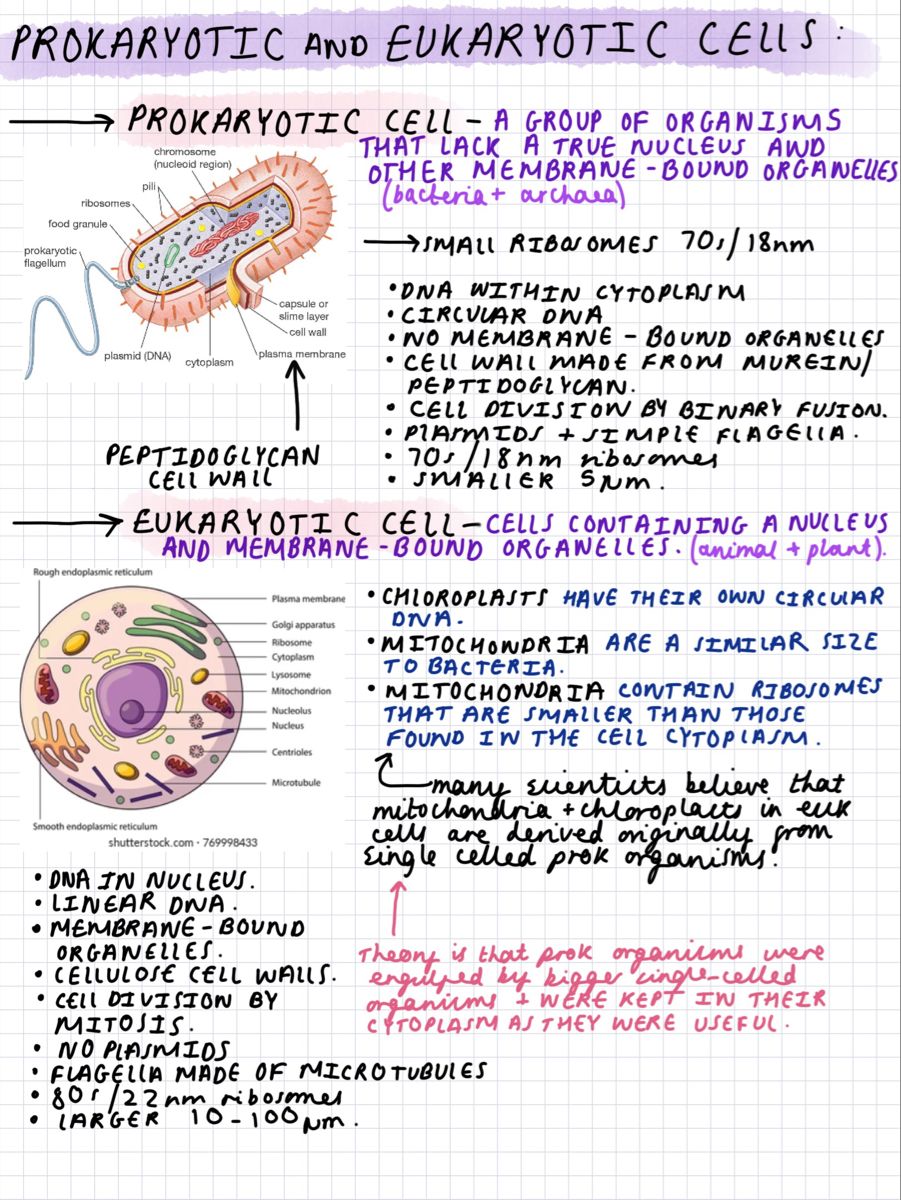Prokaryote vs Eukaryote: Key Differences Worksheet Answers

Introduction to Prokaryotes and Eukaryotes

Prokaryotes and eukaryotes are two primary classifications of all life forms on Earth, and understanding the differences between them is essential for anyone studying biology or related fields. These distinctions are not just academic curiosities; they have practical implications in medicine, ecology, biotechnology, and more. In this post, we will dive deep into the key differences between prokaryotes and eukaryotes, explore a worksheet focused on these distinctions, and provide you with answers and insights to enhance your understanding.
The Structural Differences

The most fundamental difference between prokaryotes and eukaryotes lies in the structure of their cells:
- Cell Nucleus: Eukaryotes possess a true nucleus, surrounded by a nuclear membrane. This organelle houses the cell’s DNA. In contrast, prokaryotes do not have a nucleus; instead, their DNA floats freely in the cytoplasm, referred to as the nucleoid.
- Cell Size: Generally, eukaryotic cells are significantly larger than prokaryotic cells. The increased size allows for more complex internal structures.
- Membrane-Bound Organelles: Eukaryotic cells are equipped with various organelles, like mitochondria, endoplasmic reticulum, Golgi apparatus, etc. Prokaryotes lack these complex organelles.
- Cell Wall: While many prokaryotes (like bacteria) have a cell wall composed of peptidoglycan, eukaryotic cells might have a cell wall, but it’s typically made of cellulose (in plants), chitin (in fungi), or other materials.
Worksheet on Prokaryote vs. Eukaryote Differences

The following table summarizes key differences for an easy reference:
| Characteristic | Prokaryotes | Eukaryotes |
|---|---|---|
| Nucleus | Absent | Present |
| DNA Arrangement | Circular, no histones | Linear with histones |
| Membrane-bound Organelles | Absent | Present |
| Cell Division | Binary Fission | Mitosis, Meiosis |
| Size | Usually 0.1-5.0 μm | 10-100 μm |
| Cell Wall Composition | Peptidoglycan | Cellulose, Chitin, etc. |

💡 Note: This table provides a general comparison. Exceptions exist within both prokaryotes and eukaryotes.
Comparing DNA Structure and Replication

DNA in eukaryotes and prokaryotes differs significantly in its organization:
- Chromosomes: Eukaryotic DNA is packaged into multiple linear chromosomes with histones for compaction, while prokaryotic DNA usually forms a single circular chromosome with no histones.
- Replication: Eukaryotes undergo complex replication processes with multiple origins of replication, whereas in prokaryotes, replication typically starts from a single origin and is relatively simpler.
Cellular Reproduction

- Prokaryotic Replication: Prokaryotes reproduce asexually via binary fission, which involves DNA replication, doubling of cell components, and division into two cells.
- Eukaryotic Reproduction: Eukaryotes can reproduce both sexually and asexually. Sexual reproduction involves meiosis, leading to genetic diversity, while asexual reproduction involves mitosis.
Evolutionary Aspects

Eukaryotes are thought to have evolved from prokaryotes through a process known as endosymbiotic theory, where a larger prokaryote engulfed smaller ones, eventually leading to the evolution of mitochondria and chloroplasts.
Closing Thoughts

In summary, prokaryotes and eukaryotes represent two distinct cellular architectures that have evolved to cope with different environmental challenges and opportunities. The differences in cell structure, DNA organization, and reproduction mechanisms not only categorize life forms but also dictate how they interact with their environments, respond to changes, and undergo genetic modifications. Understanding these fundamental differences helps us appreciate the complexity and interconnectedness of life at its most basic level.
What are the main differences in cell structure between prokaryotes and eukaryotes?

+
The main differences include the presence of a nucleus, the complexity of organelles, DNA structure, cell division methods, and cell size.
Can prokaryotes perform photosynthesis?

+
Yes, certain prokaryotes like cyanobacteria can photosynthesize, although they lack chloroplasts, unlike eukaryotic photosynthetic cells.
Why do eukaryotic cells need a more complex structure?

+
Eukaryotic cells have evolved to support complex life forms with specialized functions. The complexity allows for compartmentalization of cellular activities, increased efficiency, and capacity for multicellularity.



